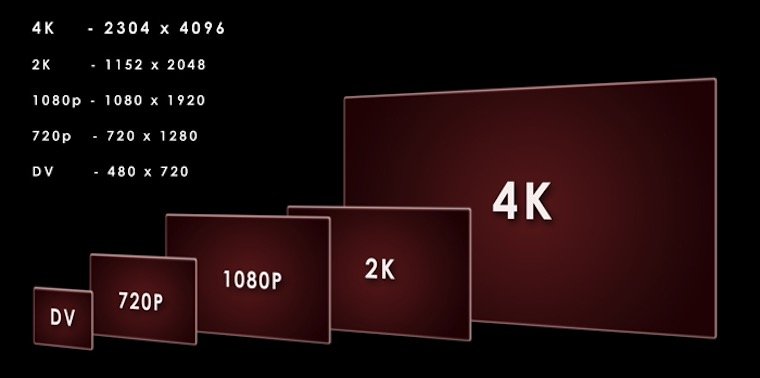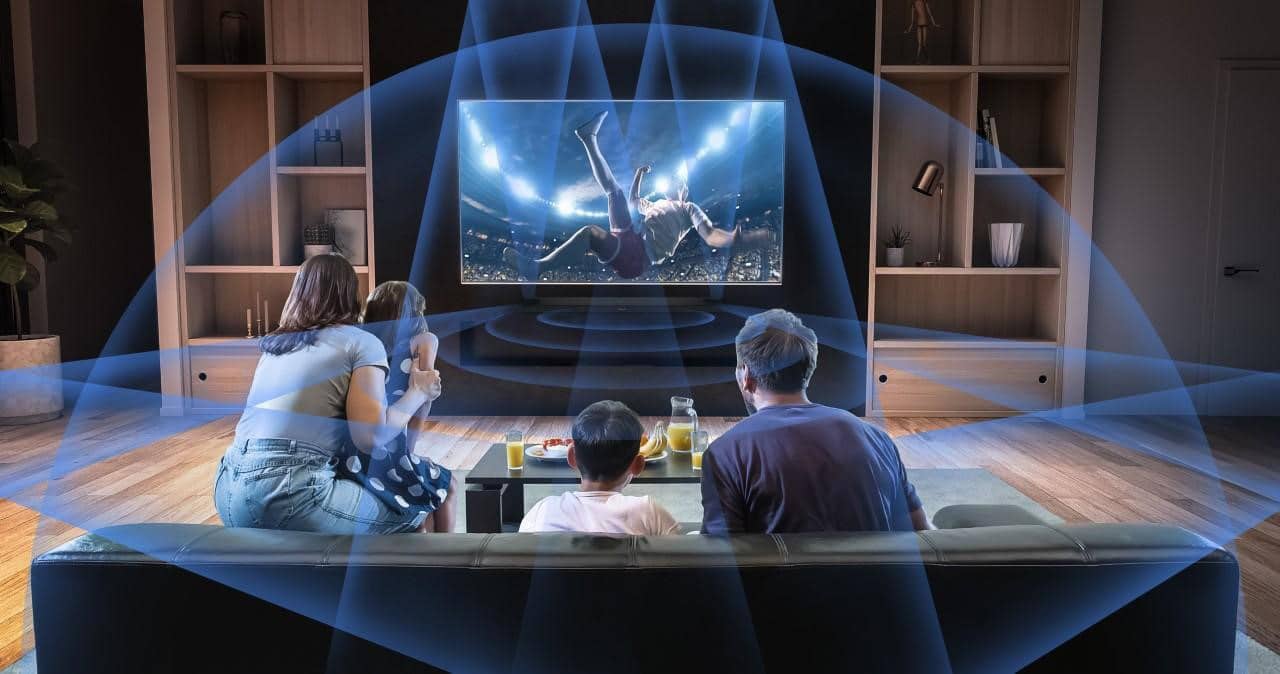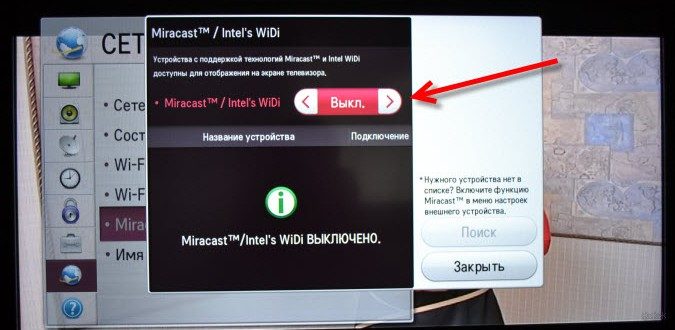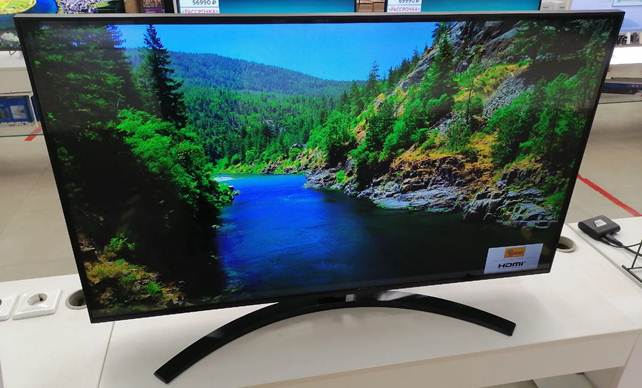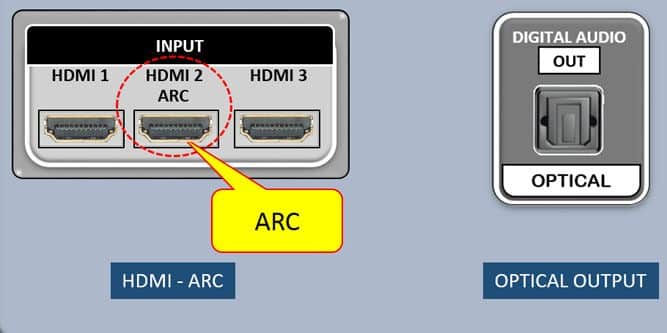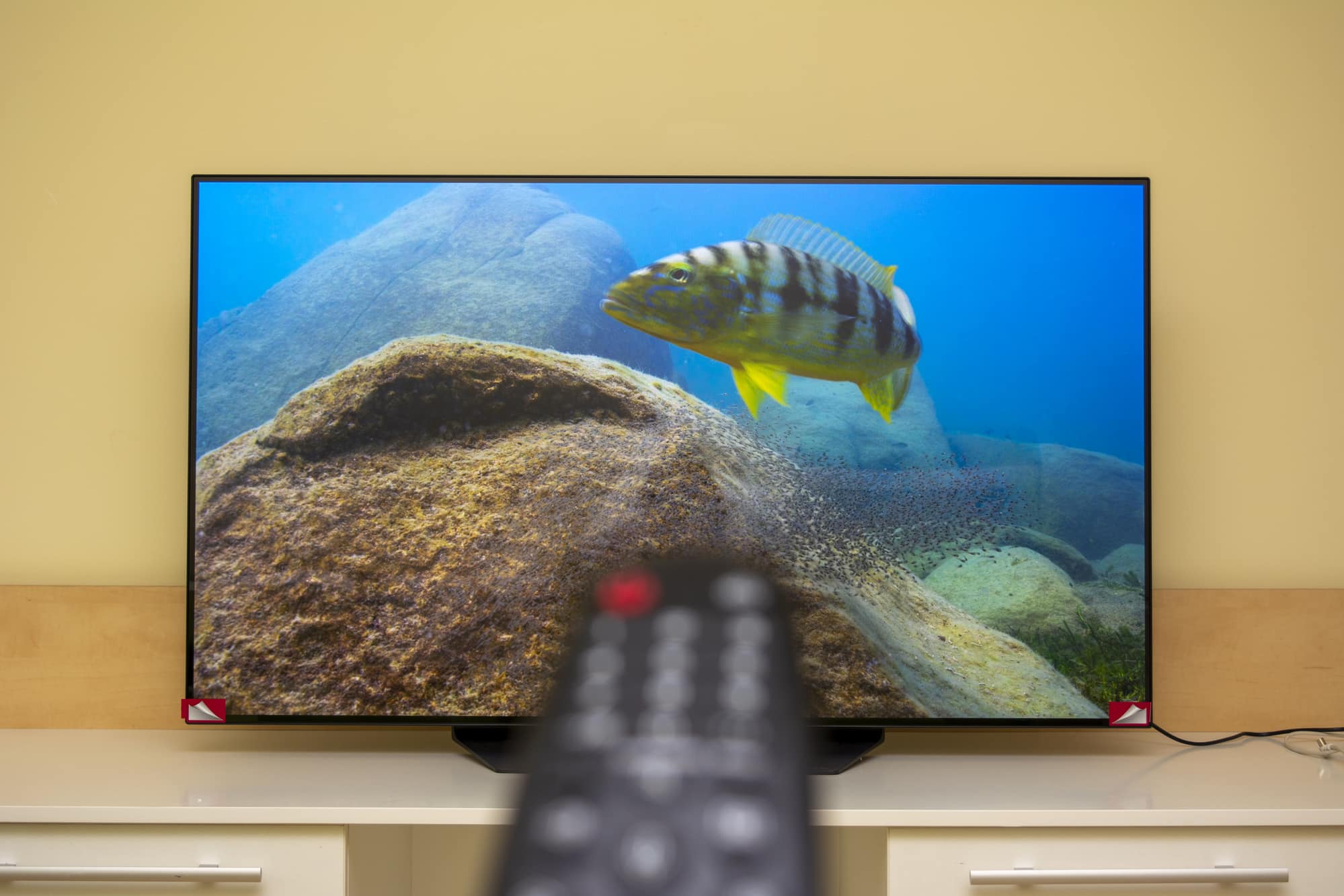Resolution is an important characteristic of TV and video. It denotes the pixel count in the horizontal and vertical position. The higher the resolution, the clearer, more detailed the image captured with the phone. TV manufacturers are limited to specifying horizontal numbers. For example, 4k resolution stands for the resolution of digital cinema and computer graphics. It corresponds to 4000 pixels horizontally.
4k resolution – standard description
The Japanese concern NHK has developed the UHDTV standard for the telecommunications sector. It was adopted in 2012 during the meetings of the International Telecommunications Union. The maximum resolution is 3840×2160 pixels. It became known as Ultra HD. Television screens have been able to achieve wide aspect ratio. It became equal to the 16: 9 position. Today the specified standard is one of the most frequently met and purchased. In the film industry, it is called 4K due to the fact that the frame width of the frame has become equal to 4000 pixels. Interestingly, TV producers don’t think to stop there.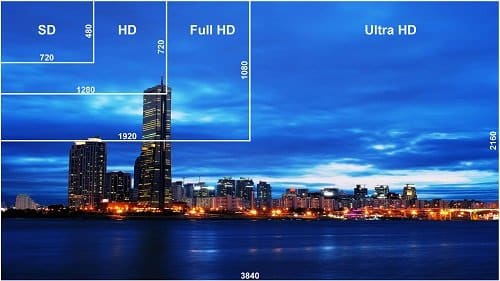 Standard Resolutions [/ caption] To understand ultra-high definition video, you need to imagine a screen of 15 meters. The picture on it will remain with the same clarity as on a standard TV screen. The digital cinema projector only supports 2K resolution. Quadruple format support is provided on IMAX. Translated from marketing English, this is the maximum type of image. The standard uses multiple projectors with 4x the resolution. 4K assumes absolute clarity and detail of the image, transmitted brightly and vividly. The density with the realism of the image increases due to the pixel decrease in size and increase in their number. As a result, objects become more detailed in outline and can be seen better. Compared to 2k, 4k assumes an improved frame rate,color depth and sound quality. UHD applies frame rate. Color has a depth of 12 bits and a color gamut of 75%. The screen reproduces about 69,000,000,000 shades of the color palette. For a better understanding, the top-end Full HD models change frames at a speed of 60 kiloseconds. The color is 8 bits, and the color space covers the screen by 35%.
Standard Resolutions [/ caption] To understand ultra-high definition video, you need to imagine a screen of 15 meters. The picture on it will remain with the same clarity as on a standard TV screen. The digital cinema projector only supports 2K resolution. Quadruple format support is provided on IMAX. Translated from marketing English, this is the maximum type of image. The standard uses multiple projectors with 4x the resolution. 4K assumes absolute clarity and detail of the image, transmitted brightly and vividly. The density with the realism of the image increases due to the pixel decrease in size and increase in their number. As a result, objects become more detailed in outline and can be seen better. Compared to 2k, 4k assumes an improved frame rate,color depth and sound quality. UHD applies frame rate. Color has a depth of 12 bits and a color gamut of 75%. The screen reproduces about 69,000,000,000 shades of the color palette. For a better understanding, the top-end Full HD models change frames at a speed of 60 kiloseconds. The color is 8 bits, and the color space covers the screen by 35%.
The difference between 4K and 2K resolution
High definition televisions have been the standard used for decades. There are no TV devices today that do not display 720p resolution. “P” stands for progressive picture type. I is an alternative denoted by interlaced scanning. The odd and even line is displayed in turn on each frame. This results in degraded image quality. The term 4000 pixels is a display format that has a wide horizontal resolution. UHD is 4K. The difference is that it is more suitable for consumers and TV with 2K. As a result, DCI is considered a professional manufacturing standard of 4096 x 2160 dots. UHD is a standard with a resolution of 3840 x 2160 pixels. There is an 8k format at 7620 x 4320 pixels. It gives a flawless image.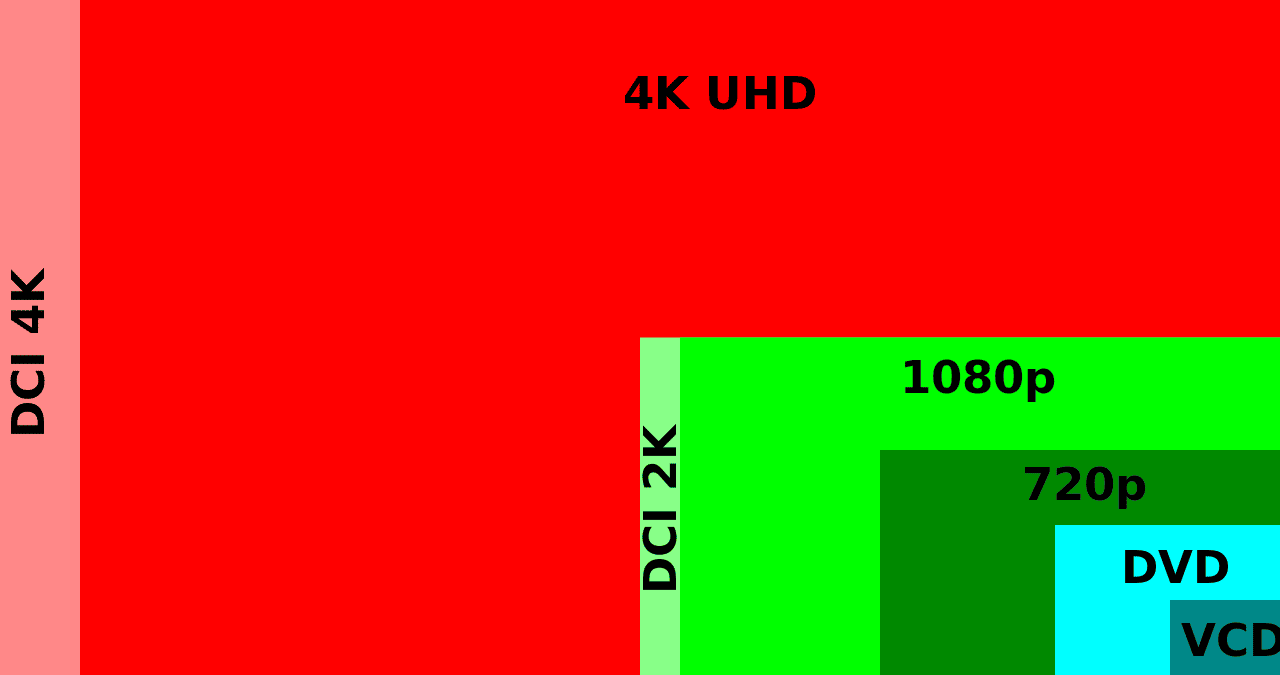
Pros and cons of 4K resolution when used on TVs
4K resolution gives ultra-clear picture detail by increasing the pixel density on the screen square millimeter. The sweep rate is 120 frames per second. Such a dynamic image puts less strain on the eyes, especially if a person watches television for a long time and hourly. 4K resolution produces a range of deep, saturated colors. It enhances the clarity of image transmission in both the illuminated and darkened areas of the screen. The format gives the best audio quality. The undoubted user benefits of Ultra HD TVs are the following facts:
- The format can be used for large-format video games, computer matrices; the screen immerses you in virtual reality without special glasses.
- The matrix forms a volumetric type of image that the viewer evaluates from any moment; for stereo, you do not need to use glasses.
- The TV can be viewed at a short distance, this is due to the fourfold increase in the screen image.
A plus is the moment of the possibility of placing a TV in a small apartment with a modest room area.
The main drawback of 4k resolution is the increased requirement for signal quality. This leads to the limitation of the content that is transmitted in the used quality. There are special films and programs on YouTube that can be used on 4k models. Netflix contains films with serials with a paid, expensive subscription. Megogo has tons of high definition content.
Which TVs use 4k
4K resolution is one of the highest quality and sharpest. Thanks to it, you can watch television programs with high definition. The advantage of this resolution is high contrast with image detail, creating a 3D effect without the use of special glasses. Today, 4K resolution is available in the following TV models: Xiaomi Mi TV 4S65 T2S 65, LG 43UM7020 43, Samsung UE43TU8000U, Samsung UN78KS9800, LG 43UK6200, LG 50UN73506LB, BBK 4ЗLEX-8161 / UTS2C. It is worth pointing out that all 4K resolution TVs have a “smart” system that allows you to view video content, photo content and use the Internet, applications and games. Through direct collaboration between standard developers and manufacturers, the consumer ultimately gains access to the best content.A bonus for users is access to high quality films at the same time when they are broadcast in cinemas. To better understand the capabilities of 4k TVs, certain conditions must be met. The device must have a wide diagonal. It must necessarily have built-in 4K TV broadcasting with the available video data. Ultimately, a person will receive a vivid picture with a three-dimensional picture, in which colors are conveyed vividly, naturally. It must necessarily have built-in 4K TV broadcasting with the available video data. Ultimately, a person will receive a vivid picture with a three-dimensional picture, in which colors are conveyed vividly, naturally. It must necessarily have built-in 4K TV broadcasting with the available video data. Ultimately, a person will receive a vivid picture with a three-dimensional picture, in which colors are conveyed vividly, naturally.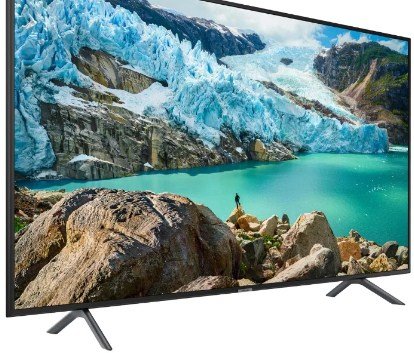 Samsung UE50RU7170U works in 4k resolution [/ caption]
Samsung UE50RU7170U works in 4k resolution [/ caption]
2K resolution, HD, full hd, UHD, 4K and 8K – the difference
High-definition television or HD is a standard that has been used everywhere for 15 years. It denotes a resolution of 720p or 1280×720 pixels. However, 90% of TVs on the market today support Full HD. This means that it displays 1080p or 1920 x 1080 pixels. “R” is progressive in translation from English. It means that the image of each frame is sequential. Each line of the frame is drawn in detail. The alternative to the letter “P” is “i”. It stands for interlaced scanning. This is on the HDTV standard at 1080i. Odd-numbered with even-numbered lines are displayed in turn on each frame. This leads to the fact that the image quality is noticeably degraded. UHD or Ultra HD is the same standard as 4K. The exception is that it produces fewer dots – 3840×2160 dots (2K). 4K is the successor to the 2K standard,which was created by DCI and offers several times improved resolution. 4k, Ultra High-Definition or Ultra High Definition is the ability of the device to output images to monitors with TVs and projectors. This is the resolution of a video with a snapshot or other image.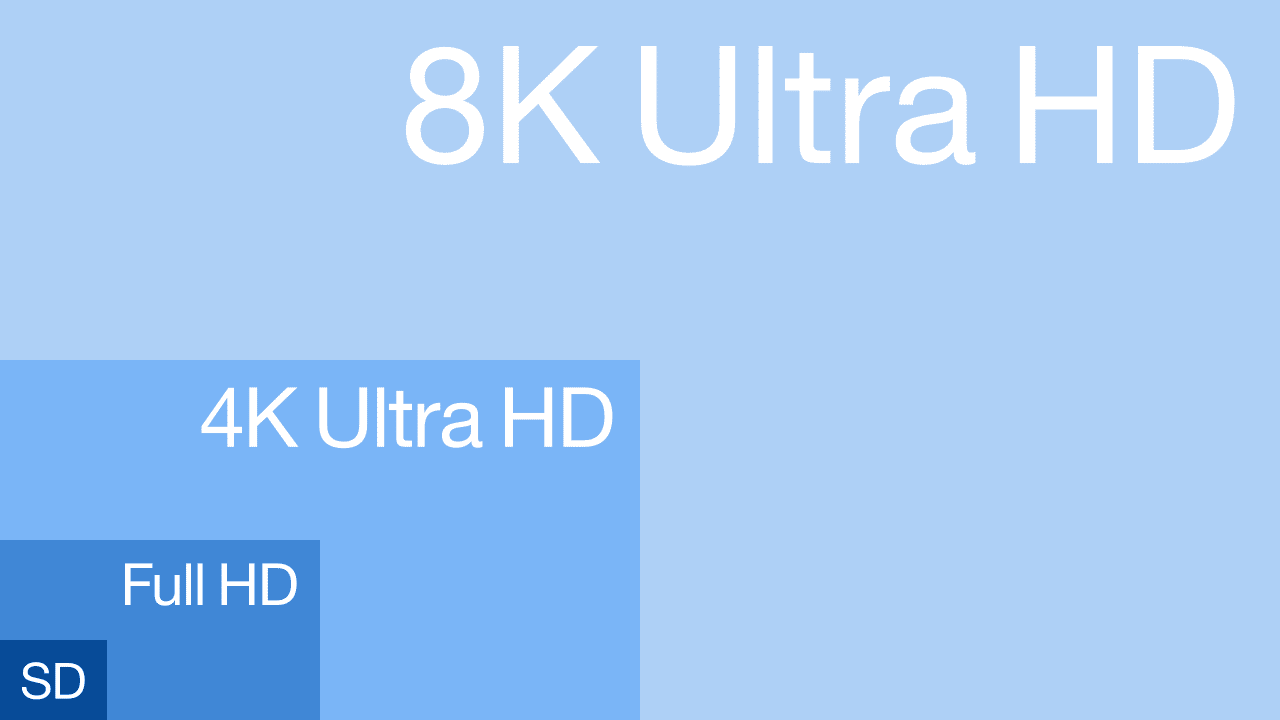 There is also Full HD Ultra format. Often called 8K, it has a resolution of 7620 x 4320 pixels. There are many TVs with this parameter on the Internet today. However, to appreciate it at its true worth, you need a diagonal of 85 inches at the TV. The advantages of the formats are visible at different distances of the user from the screen (with a diagonal of 20 to 130 inches). At a distance of 12 meters, all standards look the same. At a distance of up to 10 meters, the advantages of 720p are noticeable, at a distance of up to 7.5 meters – 1080p, and at a distance of up to 5 meters – 4K. The condition for all the standard is the same: the diagonal of the TV is from 50 to 140 inches. Otherwise, it is impossible to assess the benefits. What is the difference between 2K, 4K, 8K resolutions in numbers and pixels: https://youtu.be/cUWkH_qV5Lg
There is also Full HD Ultra format. Often called 8K, it has a resolution of 7620 x 4320 pixels. There are many TVs with this parameter on the Internet today. However, to appreciate it at its true worth, you need a diagonal of 85 inches at the TV. The advantages of the formats are visible at different distances of the user from the screen (with a diagonal of 20 to 130 inches). At a distance of 12 meters, all standards look the same. At a distance of up to 10 meters, the advantages of 720p are noticeable, at a distance of up to 7.5 meters – 1080p, and at a distance of up to 5 meters – 4K. The condition for all the standard is the same: the diagonal of the TV is from 50 to 140 inches. Otherwise, it is impossible to assess the benefits. What is the difference between 2K, 4K, 8K resolutions in numbers and pixels: https://youtu.be/cUWkH_qV5Lg
| Standard | Amount of points | Examples of TVs |
| 2k | 1280×720 | OLED TV LG OLED55BXRLB 55 |
| 4k | 4096 x 2160 | Panasonic TX-58DXR900 (TX-58DX900) |
| HD | 1280×720 | Hi 39HT101X39 TV “ |
| Full HD | 1920×1080 | Samsung UE32T5300AU 32 “ |
| UHD | 3840 × 2160 | Hi 50USY151X 50 “ |
| 8k | 7620 x 4320 | Sony KD-98ZG9 97.5 “ |
